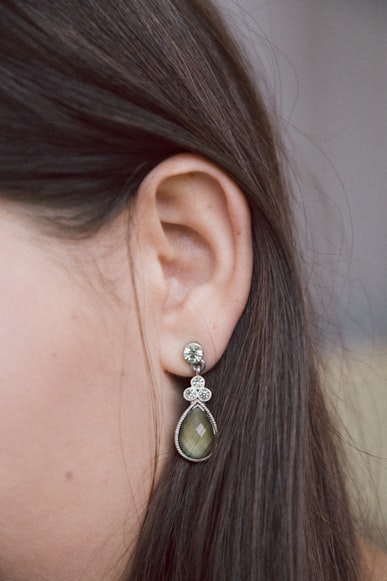I. Causes

Dogs are renowned for their exceptional hearing, and their ears play a crucial role in their overall health and well-being. However, many pet owners encounter the distressing problem of dry and crusty ears in their beloved companions. This condition, medically known as otitis externa, can cause discomfort and pain for the dog and requires prompt attention.
Causes of Dry and Crusty Ears
Several factors can contribute to dry and crusty ears in dogs. Understanding the underlying cause is essential for effective treatment and prevention.
A. Allergies: Allergic reactions can trigger inflammation in the ear canal, leading to dryness, crustiness, and itching. Common allergens include food, pollen, dust, and fleas.
B. Infections: Bacterial or yeast infections can cause redness, swelling, and discharge, which can crust and dry out the ears. Infections often occur when there is a breach in the skin’s protective barrier or when the ear canal is not adequately cleaned.
C. Dry Air: Dry air, especially during certain seasons or in heated environments, can rob the ears of their natural moisture, causing them to become dry and irritated. This is particularly common in breeds with large, erect ears.
Additional Symptoms:
In addition to dry and crusty ears, dogs may exhibit other symptoms that indicate an underlying ear problem:
- Shaking their head excessively
- Scratching or pawing at their ears
- Head tilting
- Discharge from the ears (ranging from clear to bloody)
- Odor from the ears
- Pain or discomfort when the ears are touched
Treatment Options:
The treatment for dry and crusty ears will depend on the underlying cause.
- Allergies: If allergies are suspected, your veterinarian will recommend identifying and avoiding the allergen to prevent further flare-ups.
- Infections: Infections require antibiotics or antifungal medications to kill the responsible organisms.
- Dry Air: Humidifying the environment or using ear products designed to moisturize the ear canal can help alleviate dryness caused by dry air.
Prevention:
Preventing dry and crusty ears is crucial for maintaining your dog’s ear health.
- Regular Cleaning: Regularly clean your dog’s ears with a veterinary-approved ear cleaner. This helps remove excess wax, debris, and potential irritants.
- Environmental Control: Reduce exposure to allergens and irritants by controlling your dog’s environment. This may include vacuuming frequently, using hypoallergenic bedding, and managing flea infestations.
- Moisturizing: Use ear products that help moisturize the ear canal, especially during dry seasons or when in heated environments.
Seeking Veterinary Care:
If your dog’s ears are dry, crusty, or exhibit any of the additional symptoms mentioned above, it is essential to seek veterinary attention promptly. Infections, if left untreated, can become chronic and lead to more severe complications.
Your veterinarian will perform a thorough examination of your dog’s ears to determine the underlying cause and recommend the appropriate treatment plan. They may also suggest dietary changes or environmental modifications to help manage allergies or other underlying health conditions that may contribute to the ear problems.
Conclusion:
Dry and crusty ears in dogs can be a common but uncomfortable condition. By understanding the causes, symptoms, and treatment options, you can effectively address this issue and ensure your dog’s ear health and well-being. Regular ear cleaning, environmental control, and prompt veterinary care are essential for preventing and managing dry and crusty ears in dogs.
II. Symptoms

As a dog owner, maintaining the health of your beloved companion is paramount. Healthy ears are essential for a dog’s well-being, as they play a crucial role in hearing, balance, and overall comfort. However, certain conditions can affect a dog’s ears, leading to discomfort and even health complications. One such condition is dry and crusty ears.
Symptoms
Dry and crusty ears in dogs manifest through a range of symptoms that should not be ignored. These include:
-
Crust formation: The most telltale sign of dry ears is the presence of crusty or flaky discharge around the ear canal. This discharge can range from light yellow to dark brown in color, depending on the underlying cause.
-
Redness: Dry ears can cause inflammation and irritation, leading to redness and swelling in the ear canal. This inflammation can make the ears tender to the touch, causing the dog discomfort when you examine them.
-
Swelling: In severe cases, dry ears can result in swelling of the ear canal, sometimes accompanied by a buildup of fluid or pus.
-
Head shaking or scratching: Dogs with dry ears may exhibit excessive head shaking or scratching in an attempt to relieve discomfort or remove the crusty discharge.
Causes
Dry and crusty ears in dogs can stem from various causes, including:
-
Allergies: Allergies to food, environmental allergens, and even flea saliva can trigger dry, itchy ears in dogs. These allergies cause inflammation and irritation in the ear canal, leading to excessive production of discharge and crust formation.
-
Infections: Bacterial or yeast infections can take hold in the ear canal, causing dry and crusty ears. These infections often accompany other symptoms such as discharge, odor, head shaking, or hearing loss.
-
Ear mites: Microscopic parasites known as ear mites can burrow into the ear canal, leading to severe irritation and discharge. Dry and crusty ears can be a result of the mite infestation.
-
Hormonal imbalances: Underlying hormonal imbalances, such as hypothyroidism, can affect the skin and ears, causing dryness and crust formation.
-
Age: Senior dogs are more prone to developing dry and crusty ears due to changes in their skin and earwax production.
Treatment
The treatment for dry and crusty ears in dogs depends on the underlying cause.
-
Allergies: If allergies are the culprit, your veterinarian may recommend antihistamines, corticosteroids, or allergy shots to reduce inflammation and itching.
-
Infections: Bacterial or yeast infections will require prescription antibiotics or antifungal medications to clear the infection.
-
Ear mites: Eradication of ear mites involves using medicated ear drops or oral medications to kill the parasites.
-
Hormonal imbalances: Treatment for hormonal imbalances will vary depending on the specific underlying condition.
-
Age-related issues: For senior dogs, veterinary care may include regular ear cleaning and the use of moisturizing ear drops.
Home Care
In addition to veterinary treatment, there are certain home care measures you can implement to help alleviate your dog’s discomfort and promote ear health:
-
Regular ear cleaning: Gently clean your dog’s ears using a veterinarian-approved ear cleaner and cotton balls or a soft cloth. Avoid using harsh chemicals or detergents that can irritate the ears.
-
Moisturizing ear drops: Apply veterinarian-recommended moisturizing ear drops to help soothe dry ears and prevent crust formation.
-
Regular exercise: Exercise can help circulate blood and promote ear health by increasing circulation to the ears.
-
Keep ears dry: Prevent water from entering your dog’s ears during baths or swimming. Use cotton balls or an ear plug to protect the ears from moisture.
-
Control earwax: Trim excessive ear hair and use a cotton swab to gently remove earwax buildup.
Conclusion
Dry and crusty ears in dogs can be a nuisance for both the dog and the owner. By being aware of the causes and symptoms, you can seek veterinary attention promptly and provide appropriate home care to alleviate discomfort and promote ear health. Regular ear cleaning, moisturizing, and consultation with your veterinarian will ensure your furry friend’s ears remain healthy and infection-free.
III. Treatment

Your dog’s ears are a delicate part of their anatomy, and they can be prone to a variety of problems, including dryness and crustiness. This can be caused by a number of factors, including allergies, infections, and autoimmune disorders.
Symptoms of Dry and Crusty Ears in Dogs
The most common symptom of dry and crusty ears in dogs is, of course, dryness and crustiness. The ears may also be red, inflamed, and itchy. Your dog may also shake their head or scratch at their ears excessively.
Causes of Dry and Crusty Ears in Dogs
There are a number of potential causes of dry and crusty ears in dogs, including:
- Allergies: Allergies are a common cause of dry and crusty ears in dogs. Allergies can be caused by a variety of things, including food, pollen, and dust.
- Infections: Bacterial and yeast infections can also cause dry and crusty ears in dogs.
- Autoimmune disorders: Autoimmune disorders can cause the body to attack its own tissues, including the ears.
- Other causes: Other potential causes of dry and crusty ears in dogs include:
Treatment of Dry and Crusty Ears in Dogs
The treatment for dry and crusty ears in dogs will depend on the underlying cause.
A. Antihistamines
If your dog’s dry and crusty ears are caused by allergies, your veterinarian may recommend giving them antihistamines. Antihistamines can help to block the effects of allergens and reduce inflammation.
B. Antibiotics
If your dog’s dry and crusty ears are caused by a bacterial infection, your veterinarian will likely prescribe antibiotics. Antibiotics will help to kill the bacteria and clear up the infection.
C. Moisturizers
If your dog’s dry and crusty ears are not caused by an underlying medical condition, your veterinarian may recommend using a moisturizer to help soothe and protect the ears. Moisturizers can help to keep the ears from becoming dry and cracked, and they can also help to reduce inflammation.
Preventing Dry and Crusty Ears in Dogs
There are a few things you can do to help prevent dry and crusty ears in your dog, including:
- Keep your dog’s ears clean: Regularly cleaning your dog’s ears can help to remove dirt and debris that can irritate the ears and lead to dryness and crustiness.
- Avoid exposing your dog to allergens: If your dog has allergies, it is important to avoid exposing them to the things they are allergic to. This may mean avoiding certain foods, keeping them out of dusty areas, and taking them for walks in areas where there is less pollen.
- Treat infections promptly: If your dog develops an ear infection, it is important to treat it promptly to prevent it from becoming chronic.
- See your veterinarian regularly: Regular veterinary checkups can help to catch and treat ear problems early on.
Conclusion
Dry and crusty ears in dogs can be a common problem, but it is usually treatable. If you notice that your dog’s ears are dry and crusty, it is important to take them to the veterinarian to determine the underlying cause and get appropriate treatment.
IV. Prevention

As dog owners, we all cherish our furry friends and strive to provide them with the best possible care. Unfortunately, even the healthiest dogs can develop health issues, including dry and crusty ears. While this condition can be uncomfortable and even painful for our canine companions, there are proactive measures we can take to prevent and treat it.
Causes of Dry and Crusty Dog Ears
Before exploring prevention strategies, it’s essential to understand the underlying causes of dry and crusty dog ears. These include:
- Allergies: Environmental allergies, flea bites, or food sensitivities can trigger inflammation within the ear canal, leading to dryness and crustiness.
- Ear infections: Bacterial or yeast infections can cause inflammation, discharge, and crusting.
- Parasites: Ear mites can burrow into the ear canal, causing intense itching and crust formation.
- Seborrhea: This condition, characterized by excessive oil production, can also result in dry and flaky skin on the ears.
- Hypothyroidism: A hormonal imbalance can affect the dog’s skin and ear health, causing dryness and crustiness.
Prevention Strategies
To prevent dry and crusty dog ears, regular cleaning and other preventative measures are crucial.
A. Regular Cleaning
Regular ear cleaning helps remove dirt, debris, and excess earwax, preventing the buildup that can lead to dryness and irritation. Here are the steps to follow:
- Gather your supplies: You’ll need an ear cleaner specifically designed for dogs, cotton balls or gauze pads, and a towel.
- Secure your dog: Gently restrain your dog and position them comfortably.
- Fill the ear canal: Hold the ear flap back and gently squeeze a small amount of ear cleaner into the ear canal.
- Massage the base of the ear: Massage the base of the ear to help distribute the cleaner.
- Wipe clean: Use a cotton ball or gauze pad to wipe away any excess cleaner and debris.
- Dry the ears: Use a towel to gently pat the ears dry.
Frequency of ear cleaning will vary depending on your dog’s breed and individual needs. Consult with your veterinarian for specific recommendations.
B. Using a Humidifier
Dry air can contribute to dry and crusty ears in dogs. Using a humidifier in the home can add moisture to the air, helping to prevent the ears from drying out. This is especially beneficial during the colder months when indoor air tends to be drier.
C. Avoiding Allergens
If your dog has allergies, it’s essential to identify and avoid the allergens that trigger the reaction. This may involve avoiding certain foods, fabrics, or environmental triggers. If you suspect allergies, consult with your veterinarian for allergy testing and treatment recommendations.
Treatment for Dry and Crusty Dog Ears
If preventive measures alone do not resolve the issue, treatment may be necessary. Treatment options may include:
- Antibiotics or antifungals: If ear infections are the cause, your veterinarian may prescribe antibiotics or antifungals to clear the infection.
- Anti-inflammatory medications: These medications can reduce inflammation and discomfort associated with dry and crusty ears.
- Specialized ear cleaners: Some ear cleaners contain ingredients designed to soothe and heal inflamed and irritated ear canals.
- Hypoallergenic diet: If allergies are suspected, your veterinarian may recommend a hypoallergenic diet to eliminate potential food triggers.
Conclusion
Dry and crusty dog ears can be a frustrating and uncomfortable issue, but with proper prevention and treatment, we can help our canine companions maintain healthy and comfortable ears. Regular ear cleaning, using a humidifier, and avoiding allergens are crucial preventive measures. If home remedies do not provide relief, it’s essential to consult with your veterinarian for proper diagnosis and treatment. By working together, we can ensure that our furry friends enjoy a life free of ear discomfort and keep their ears wagging happily.
V. Home Remedies

Dogs’ ears are delicate and prone to various skin conditions, including dry and crusty ears. This can cause discomfort, itching, and even infection. While there are many commercial products available to treat this condition, several natural home remedies can also be effective.
Causes of Dry and Crusty Dog Ears
Before treating dry and crusty dog ears, it’s essential to determine the underlying cause. Some common causes include:
- Allergies (e.g., to food, environmental allergens)
- Skin infections (e.g., yeast, bacteria)
- Autoimmune diseases
- Parasites (e.g., ear mites)
- Ear wax buildup
- Dry skin
Home Remedies for Dry and Crusty Dog Ears
If your dog’s dry and crusty ears are caused by minor skin irritation or allergies, you can try the following home remedies:
A. Coconut Oil
Coconut oil is an excellent natural moisturizer that can help soothe and hydrate dry, crusty skin. It also has antibacterial and antifungal properties.
- Warm a small amount of coconut oil in your hand.
- Gently massage the oil into your dog’s ears, making sure to avoid contact with the eyes.
- Leave the oil in for 15-30 minutes before wiping it off with a warm, damp cloth.
B. Aloe Vera
Aloe vera is a plant that contains anti-inflammatory and antibacterial compounds. It can help reduce itching, soothe irritation, and promote skin healing.
- Extract the gel from an aloe vera leaf.
- Apply a small amount of the gel to your dog’s ears and massage it in gently.
- Avoid getting the gel in your dog’s eyes.
C. Oatmeal Baths
Oatmeal is a natural anti-inflammatory that can help soothe and heal dry, irritated skin.
- Grind 1 cup of oatmeal into a fine powder.
- Add the powdered oatmeal to a warm bath.
- Allow your dog to soak in the bath for 10-15 minutes.
- Rinse your dog thoroughly and pat them dry.
Additional Tips for Treating Dry and Crusty Dog Ears
- Keep your dog’s ears clean and free of debris.
- Avoid using harsh chemicals or detergents on your dog’s ears.
- Trim any excess hair around your dog’s ears, as this can trap moisture and bacteria.
- Use a humidifier in your home to help keep the air moist, especially during winter.
- Consult with your veterinarian if your dog’s dry and crusty ears do not improve with home remedies, as they may indicate an underlying medical condition.
Prevention
To prevent dry and crusty dog ears, follow these tips:
- Feed your dog a high-quality diet that supports skin health.
- Keep your dog’s ears clean by wiping them regularly with a damp cloth.
- Check your dog’s ears for signs of infection or irritation.
- Treat any allergies or skin conditions promptly.
By taking proper care of your dog’s ears, you can help prevent dry and crusty conditions and keep your furry friend’s ears healthy and comfortable.
VI. When to See a Vet
Dry, crusty ears in dogs can be a common issue, but they can also indicate underlying health problems that warrant veterinary intervention. To ensure your dog’s well-being, it’s crucial to recognize when to seek professional help.
Causes of Dry and Crusty Dog Ears
- Allergies: Environmental allergens, such as pollen or dust mites, can trigger skin irritation, including dry, crusty ears.
- Infections: Bacterial or yeast infections can cause inflammation and crusting in the ear canal.
- Parasites: Ear mites or ringworms can cause severe itching and crusting.
- Autoimmune diseases: Certain autoimmune conditions, like pemphigus foliaceus, can affect the skin and ears, leading to dryness and crusting.
- Diet deficiencies: A lack of essential vitamins or minerals can contribute to skin problems, including dry and crusty ears.
When to See a Vet
While dry and crusty ears may not always require veterinary attention, there are specific instances where it’s essential to seek professional help:
A. If symptoms persist:
If your dog’s ears remain dry and crusty despite home remedies or over-the-counter treatments, it’s important to consult a veterinarian. Prolonged symptoms may indicate an underlying health issue that needs medical intervention.
B. If the dog is in pain:
Excessive scratching, head shaking, or signs of discomfort indicate that your dog’s ears are causing them pain. This could be due to an infection or other underlying conditions that require veterinary treatment.
C. If there is discharge:
Discharge from the ears can be a sign of an infection or a more serious health problem. Yellow, green, or bloody discharge should be evaluated by a veterinarian promptly.
Veterinary Diagnosis and Treatment
During a veterinary examination, the veterinarian will examine your dog’s ears and perform necessary tests to determine the underlying cause of the crusting. This may include:
- Ear cytology: Scraping or swabbing from the ear canal to identify any bacteria, yeast, or parasites.
- Allergy testing: If allergies are suspected, allergy testing can pinpoint specific allergens triggering the symptoms.
- Biopsy: In some cases, a sample of ear tissue may be taken for biopsy to rule out autoimmune diseases or other underlying conditions.
Treatment will vary depending on the underlying cause and may include:
- Antibiotics or antifungal medications: For bacterial or yeast infections.
- Antiparasitic treatments: For ear mites or ringworms.
- Allergy management: Identifying allergens and minimizing exposure.
- Dietary supplements: To address any vitamin or mineral deficiencies.
Conclusion
Dry and crusty dog ears can be a nuisance, but they can also be a symptom of a more serious health problem. By recognizing when to seek veterinary attention and following the prescribed treatment plan, you can ensure your dog’s ears remain healthy and comfortable. Remember, early diagnosis and prompt treatment are crucial for the well-being of your furry companion.
VII. Tips
As a dog owner, it’s essential to be aware of the importance of ear health for our furry companions. Dry and crusty dog ears can be an uncomfortable and even painful issue, and it’s crucial to address it promptly to ensure your pet’s well-being.
Causes of Dry and Crusty Dog Ears
Several factors can contribute to dry and crusty dog ears, including:
- Allergies: Allergies to environmental allergens, such as pollen, dust, or certain foods, can trigger inflammation and irritation in the ears.
- Ear Mites: These tiny parasites can infest the ear canal, causing irritation, itching, and crust formation.
- Skin Conditions: Underlying skin conditions, such as eczema or seborrhea, can cause skin dryness and crusting on the ears.
- Bacterial or Yeast Infections: Infections can lead to inflammation, crusting, and discharge from the ears.
- Lack of Moisture: In dry environments, the air can draw moisture from the skin, resulting in dry and crusty ears.
Symptoms
If your dog’s ears are dry and crusty, you may notice the following symptoms:
- Crusty or flaky debris in the ear canal
- Itching or scratching at the ears
- Discharge from the ears
- Redness or inflammation
- Head shaking or tilting
- Balance problems
Treatment
Depending on the underlying cause, treating dry and crusty dog ears may involve:
- Antihistamines or Medications: If allergies are suspected, your veterinarian may prescribe medications to reduce inflammation.
- Ear Mite Treatment: Antiparasitic medication will be given to eliminate ear mites.
- Skin Condition Treatment: If an underlying skin condition is present, appropriate treatments, such as medicated shampoos or topical creams, will be prescribed.
- Antibiotics or Antifungals: Infections will require treatment with antibiotics or antifungals.
- Home Care: In addition to prescribed treatments, home care can help alleviate discomfort and promote healing.
Tips
To prevent and treat dry and crusty dog ears, consider the following tips:
A. Clean the Ears Regularly
Regular ear cleaning is essential for maintaining healthy ears and preventing infections. Use a gentle ear cleaning solution and a soft cloth or cotton ball to clean the outer ear canal. Avoid using cotton swabs, as they can push debris deeper into the ear.
B. Avoid Exposing the Dog to Allergens
If your dog has allergies, identifying and avoiding the triggers can help reduce ear irritation. This may involve keeping your dog away from certain plants, using hypoallergenic bedding, or switching to a special diet.
C. Use a Humidifier in Dry Environments
Humidifiers add moisture to the air, which can help prevent dry and crusty ears. This is especially important in dry climates or during winter months.
D. Provide a Balanced Diet
A balanced diet rich in vitamins and minerals can support healthy skin and ears. Avoid feeding your dog table scraps or processed foods, as these can contribute to allergies and skin problems.
E. Check Your Dog’s Ears Regularly
Regularly inspecting your dog’s ears for any signs of redness, discharge, or crusting is crucial for early detection of any problems. If you notice anything unusual, consult your veterinarian promptly.
F. Avoid Over-Bathing
Frequent bathing can strip the skin of its natural oils and worsen dry ears. Only bathe your dog when necessary and use a gentle, hypoallergenic shampoo.
G. Use Ear Drops as Directed
If your veterinarian prescribes ear drops, follow the instructions carefully. Apply the drops as directed and massage the base of the ear to ensure they reach the affected area.
Conclusion
Dry and crusty dog ears can be an uncomfortable and distressing condition for your furry companion. By understanding the causes, implementing proper treatment, and following these preventative tips, you can help keep your dog’s ears healthy and happy. Remember to consult your veterinarian regularly to ensure your dog’s ears are receiving the best possible care.




















